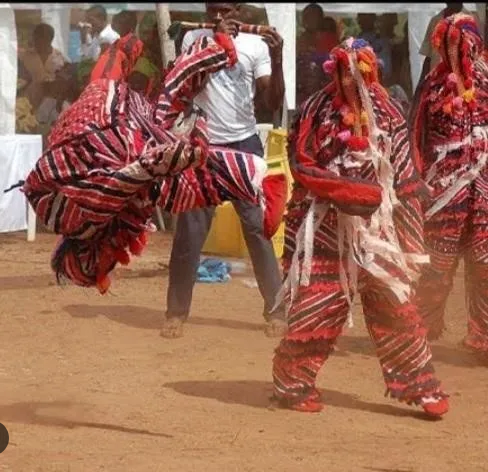Agricultural Practices in Esan land, Nigeria

Esanland has a rich culture and traditional practices that are vivid through agriculture, religion, festivals, architecture, and more. These beautiful endowments on the land are believed to have occurred by stiff positive values the people incorporate, attracting blessings from God (Osanebua).
Download the first chapter of The Storytelling Series: Beginners’ Guide for Small Businesses & Content Creators by Obehi Ewanfoh.
Introduction to Agricultural Practices in Esan land, Nigeria
The Esans natural endowment contributed to agricultural practices, which is the major occupation of the subjects. Like every other ethnic group in Nigeria, the Esans downright depend on the agricultural produces as the major economic activities in their land.
Agricultural practices are pervasive in all ethnic groups in the country, but there remains a margin of difference in how each group carries out theirs. Referencing these differences, the Esans have certain processes, and sacrifices conducted before venturing into cultivation and harvesting.
In this article, we will glide through agricultural practices in Esanland; read further to discover these practices.
Agriculture In Precolonial Esanland
According to Okojie’s reference in 1960, Esanland is an agricultural country, where everyone, both men and women, is a simple farmer. Agriculture has taken its root in Esanland in precolonial times.
It’s believed the Esans started cultivating and harvesting after God (Osanebua) turned his back on the people for not keeping his stipulated rules of consuming pounded yam (Ema) that would sate them daily without reservations.
Greed consumed the people, thereby making them reserve pounded yam they would eat for several days. When God discovered their recalcitration of his rules, he abandoned them, making all Esans resort to cultivating what they needed.
Slowly, the Esans made huge headway in agriculture, producing different staples such as yam, palm trees, cocoa, etc., of which yam remains the king of crops amongst all. Crop evolution and development in Esanland are marked by three stages, according to Adiele Afigbo.
The first stage of crop evolution in Esanland is marked by the local initiative of cultivation of crops such as palm trees, yam, cotton, etc.; this period led to the cultivation of three species of yam known as Ori, Asukhu, and Ikpein.
The second stage was when the southeast Asian crop was introduced in West Africa during trade; some of these crops include banana (Ijemeca), cocoyam (Emebo), water yam (obhie), etc.
The third stage surfaced during the European trade that linked West Africa and the Americas during the transatlantic slave trade, complex crops like maize, tomatoes, groundnut, cassava, etc., were brought in exchange for rubber and cocoa, to mention a few.
See also Esan Entrepreneurship (The Value Of Handwork)
Procedures For Cultivating Crops In Esanland
The Esans have a conventional procedure they follow up before cultivation and harvesting. However, the Esans have nameless moons when each farming stage is should carry out. The appearance of these moons determines what will be done during that stint.
They have moons for yams, moons for Bush clearing, moons for eating corns, etc. They mark the beginning of a new season (agricultural year) after the pelt of heavy rain, referred to as Amukpe. However, before Amukpe, they are expected to clear the Bush to be ready for a new cultivation phase.
The appearance of Amukpe thrills every family head, as it marks the commencement of a new bountiful season. Hence, all family heads will make sacrifices to the image of his late father and the ancestors in a shrine called Alluelimin.
It’s believed that the Alluelimin shrine is basically a shrine possessed by every family head, where prayers and sacrifices are made to the ancestors. After the sacrifices conducted by the family head, purification and land clearing ensue.
The yielding of crops solely depends on the acceptance of the sacrifices made, and it’s usually determined by how successful a young crop is in the stipulated farmland- that’s because they practice communal land ownership. Hence, as a result of the general ownership of land, determining where to cultivate crops every season will be generally planned and accepted.
When done, the Onojie dispenses the land to the people to cultivate on. In cases where the cultivated crops are not yielding as a result of lack of rainfall or penetration of pests, the blame will be pinned on the Onojie and the Earth shrine priest.
Consider reading – Religion And Spirituality Among The Esan People of Nigeria
Their purity will be seriously questioned because they are viewed as the connection or intermediary between the gods and the subjects. Therefore, to avoid such scenarios, the Onojie and earth shrine priest will ensure all the necessities are put in place- which is getting a good herbalist and rainmaker that would help facilitate the growth of the cultivated crops.
Land Tenure System In Esanland
The Esans, just like every other ethnic group in the precolonial era, practiced communal ownership of land. Usually, the lands for cultivation are given out by the Onojie, and clearing the Bush prior to the season is done by the communal labor – meaning all able-bodied men in the village will work together to clear and burn the farmland.
However, individual families can acquire a good portion of land depending on the number of laborers that came from the family. Furthermore, determining a wealthy man in Esanland counts on the number of wives and children he has who would work on the land. As a result, men marry three to four wives to expand the number of laborers he has.
Considering the large portion of the land needed for cultivation, the farmlands are therefore located far away from the villages. Hence, before the season, men will expend three weeks readying the yam mounds, etc.
After preparing the yam mounds and all, the men would spend two weeks waiting for the rain to fall properly before cultivating. Once the actual planting period is specified, the women and children will gather the crops to be cultivated together, and the older men will commence planting the seeds.
However, the Esans avoid planting on moist soil as they consider it the dwelling place of the evil spirits. So, if the people want their crops to grow well and yield fruits, avoiding moist soil is a must. Aside from their belief that the soil is the dwelling place of evil spirits, the soil is a habitat for pests, destroying cultivated crops.
The Esans still thrive in agriculture lately. Most staples transported nationwide for trading and exchange for other goods are basically gotten from the Esanland. This proves Esanland as a true agricultural country.
Check out Esan Geography And Topography – South of Nigeria
Esanland today serves as the breadbasket of Edo state, and as a result of this, the government has introduced different agricultural programs to induce development. Esanland is central to all the economic plans the state government pursues in Edo state.
These economic plans and programs introduced by the government have generally led to improvement in agriculture and job opportunities. Advanced farming implements and machines have been provided by the government so far.
Esanland agriculture not only laid the foundation for other economic pursuits in the precolonial era but also brought about the consolidation of different ethnic groups in Nigeria.
Conclusion
Agricultural practices in Esanland remain distinct and unique from other ethnic groups. It ensured the adequate provision of food staples to the growing populations in Esanland. Their practice of communal labor and general land ownership promoted the unity that existed among the Esan farmers together.
Their intense cooperation proved how beneficial communalism was. Today, the Esans remain the breadbasket of Edo state and other neighboring states as they facilitate the exchange of their locally produced goods with other products.
Written by Juliet Emmanuel for African Docs Project
Download the first chapter of The Storytelling Series: Beginners’ Guide for Small Businesses & Content Creators by Obehi Ewanfoh.







One Comment